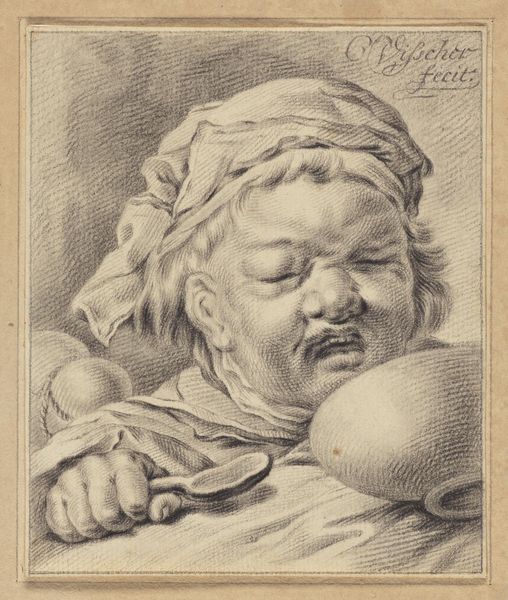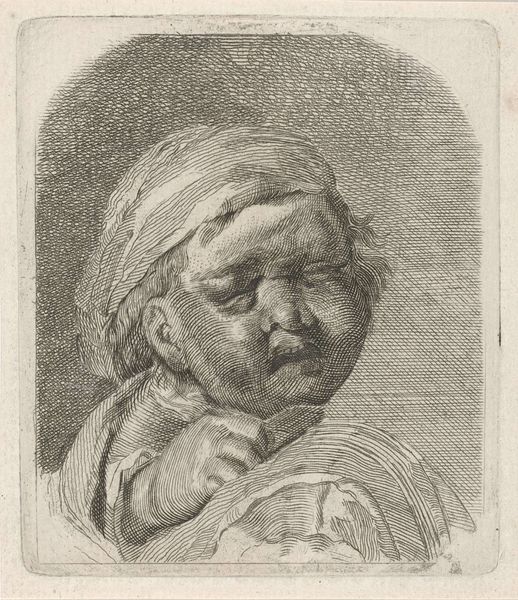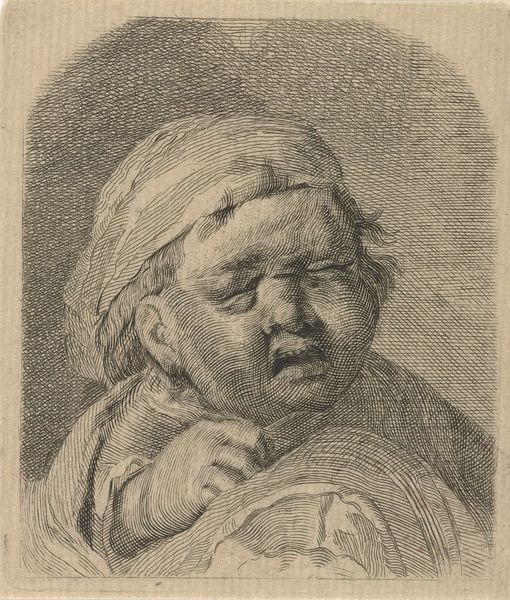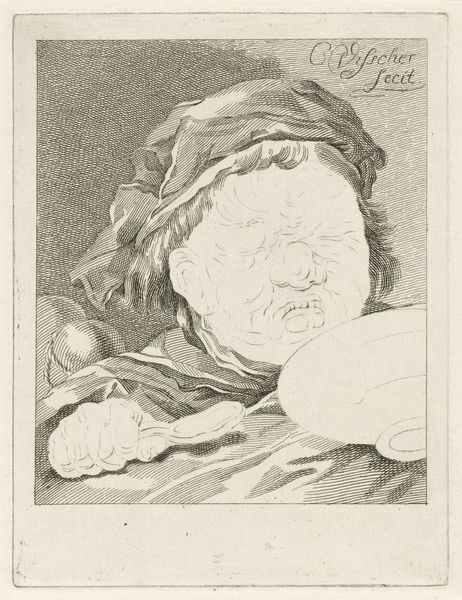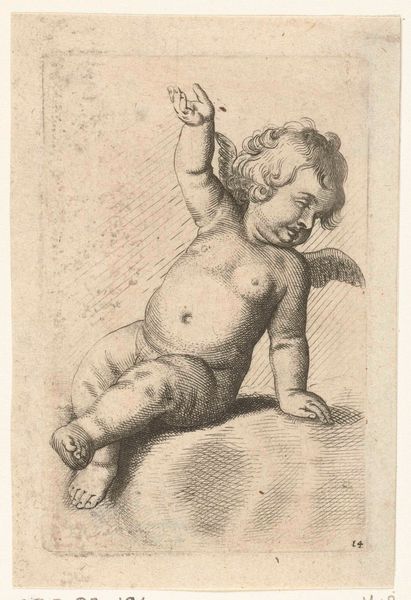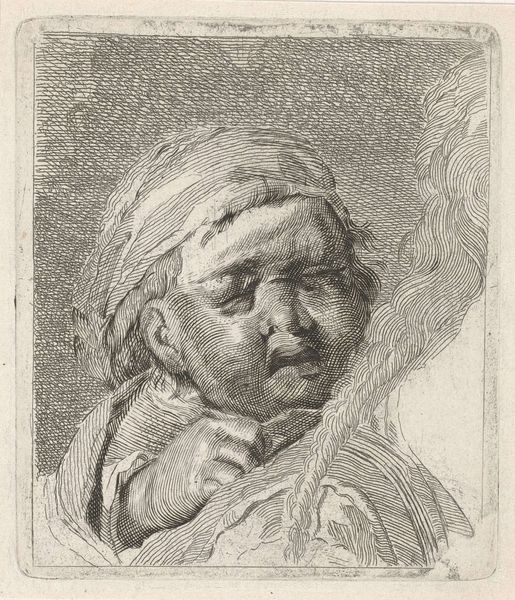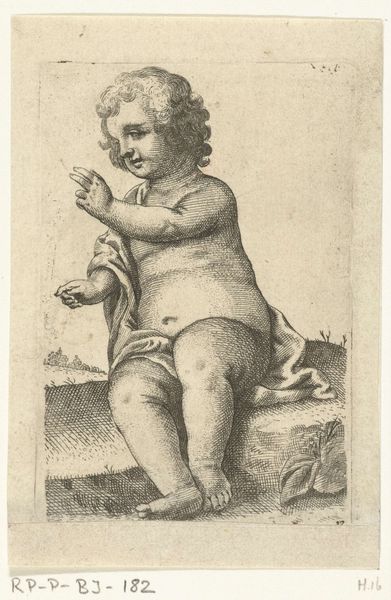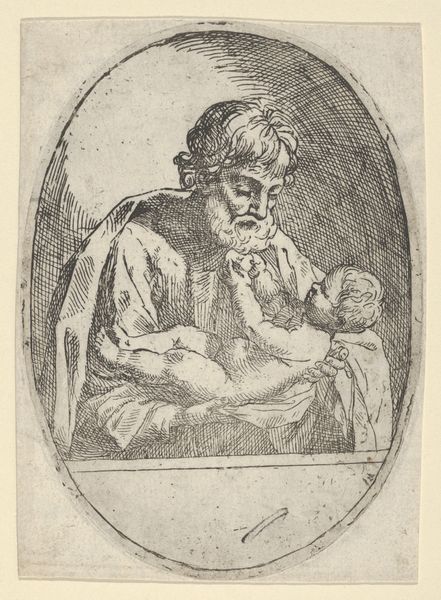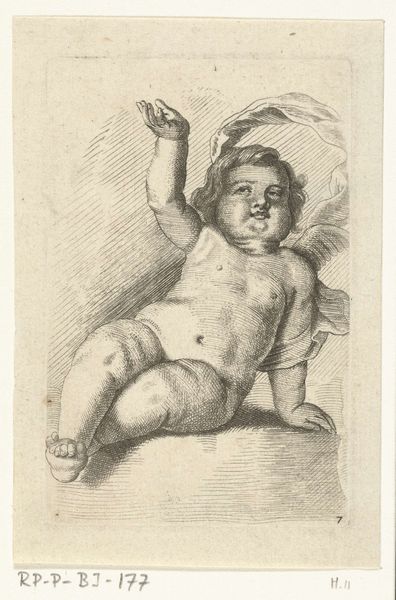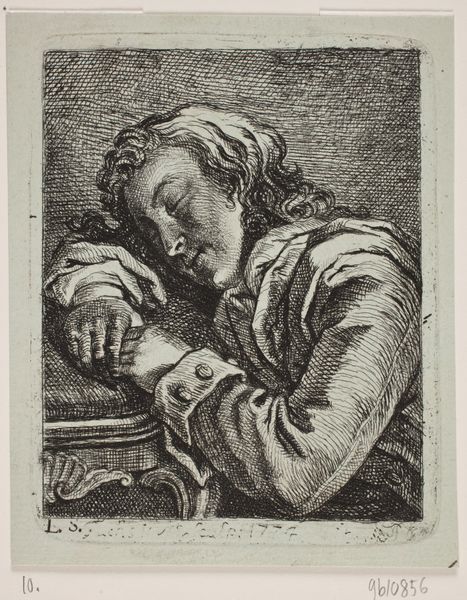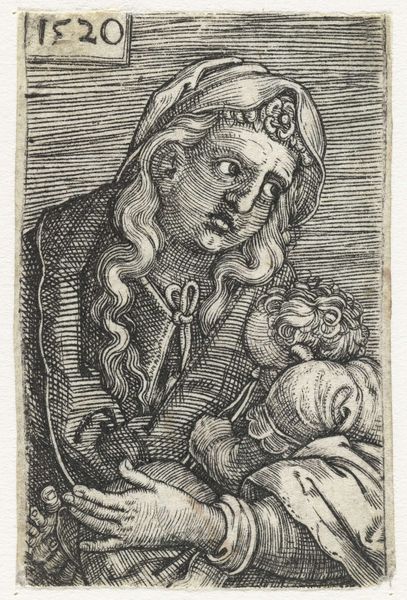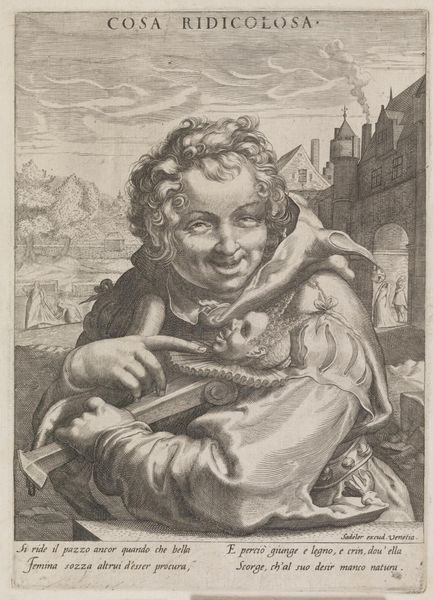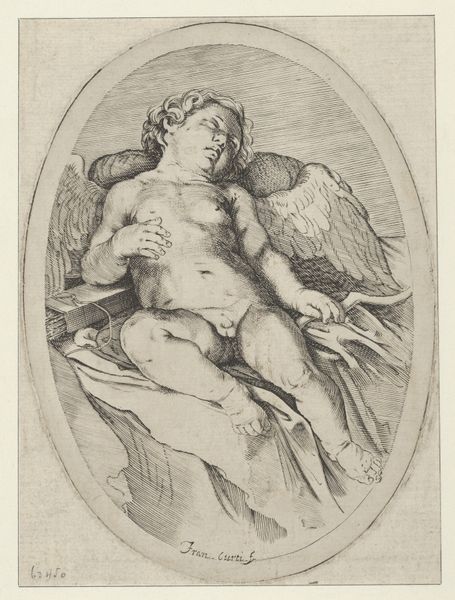
Dimensions: height 159 mm, width 119 mm
Copyright: Rijks Museum: Open Domain
Editor: So, this engraving, “Huilend kind met nap,” or "Crying child with bowl," was made by Pieter de Mare sometime between 1768 and 1796. It's really striking—the detail in the baby's face is incredible! What’s interesting is the way he's clenching his eyes shut. What do you see in this piece? Curator: It’s a fascinating depiction of emotion, isn't it? Consider the bowl and spoon: they represent sustenance, care. Yet the child rejects them. Why? What unmet need does this tantrum signify? Perhaps this speaks to broader themes – rejection of societal nourishment, or perhaps the disruption of familial harmony reflected through the disruption of the nurturing process. Editor: That’s a thought-provoking way to frame it. I was just focused on the child's immediate discomfort. The disruption idea hadn't occurred to me! Curator: And consider the style—it emulates Baroque drama but focuses on a very domestic, personal scene. This juxtaposition is important. What could be more personal than a crying infant, but what also informs it? Editor: Social expectations maybe? Babies crying disrupt the idealized home? Curator: Precisely! There is so much culturally encoded imagery in a baby: innocence, fragility, and dependence, juxtaposed here against its direct opposite, displeasure! What’s the psychological impact of seeing this contradiction portrayed so openly? Editor: It’s not sugar-coated, that's for sure! Thanks, I see so many more layers here than I originally did! Curator: And I’ve found a deeper appreciation for the engraving by hearing your observations. Looking closely at how emotional meaning has changed or hasn’t changed is part of art’s impact, wouldn't you say?
Comments
No comments
Be the first to comment and join the conversation on the ultimate creative platform.
